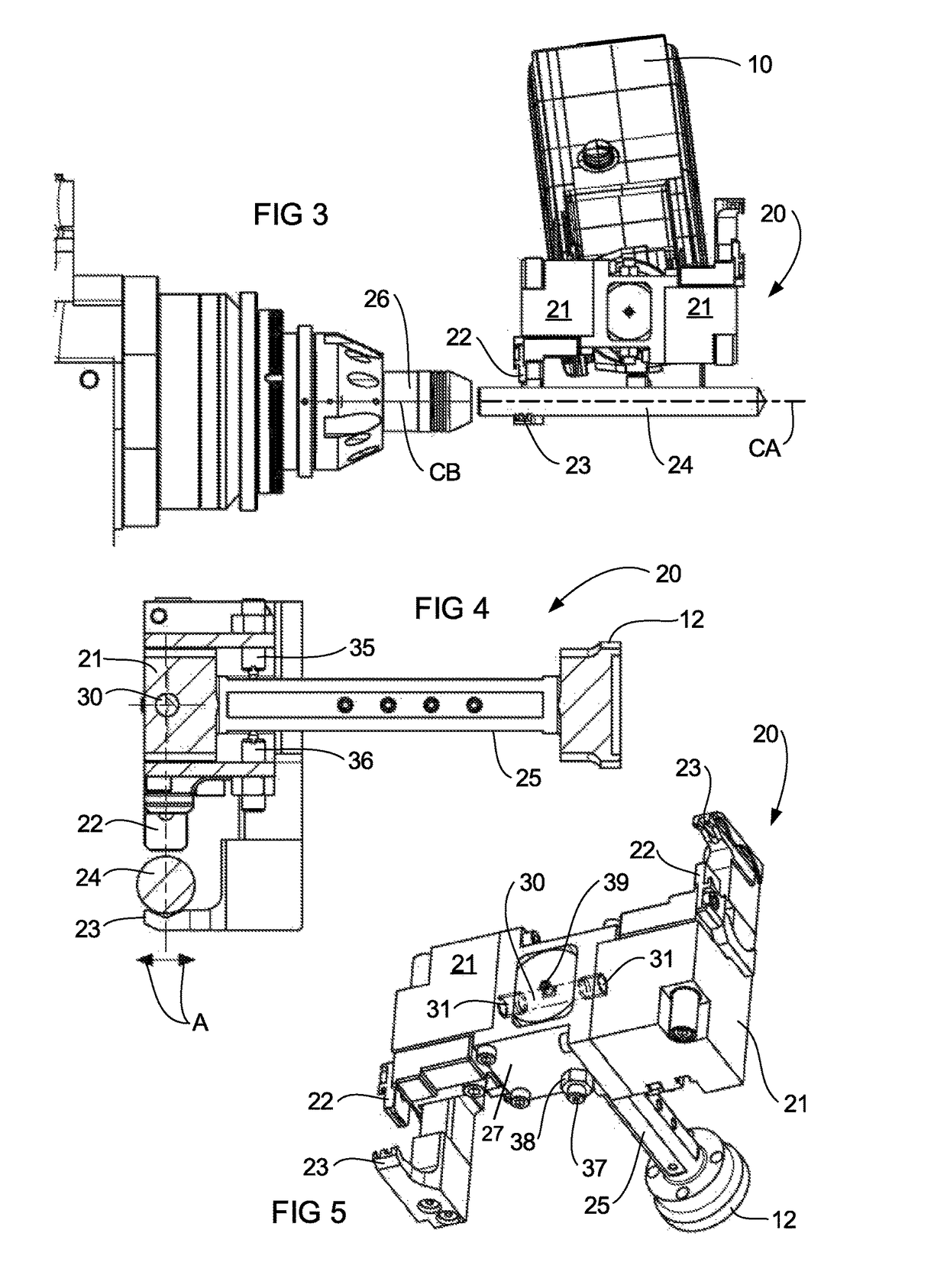Tool gripper arrangement
a tool and tool technology, applied in the field of tool gripper arrangement, can solve the problems of inability to easily detect inaccurate or wrongly machined parts, insufficient changes to affect the dimensions of the robot arm in a manner, and inability to change in a manner, so as to achieve easy rotation and reduce the influence
- Summary
- Abstract
- Description
- Claims
- Application Information
AI Technical Summary
Benefits of technology
Problems solved by technology
Method used
Image
Examples
Embodiment Construction
[0041]FIGS. 1 to 3 illustrate the invention in a position for loading a tool into a collet of a grinding or milling machine. FIG. 1 thus shows a robot arm 10 which has an end effector 11 and in turn, to which is attached the base 12 of a tool gripping arrangement or robot gripper head 20. The tool gripping arrangement 20 includes a pair of tool clamp grippers 21 that each includes a pair of gripper fingers 22 and 23 (see FIG. 4) for gripping a tool 24 and the tool gripping arrangement 20 is attached to the end effector 11 via a shaft or arm 25.
[0042]The tool clamp grippers 21 are of a standard form and their operation would be known to persons skilled in the art. Accordingly, the manner in which the tool clamp grippers 21 operate to clamp a tool is not further discussed herein. The tool grippers are mounted to a body 27 for rotation relative to the body 27. The arm 25 extends into the body 27 and is fixed to the body.
[0043]One of the tool clamp grippers 21 is shown gripping the tool...
PUM
 Login to View More
Login to View More Abstract
Description
Claims
Application Information
 Login to View More
Login to View More - R&D
- Intellectual Property
- Life Sciences
- Materials
- Tech Scout
- Unparalleled Data Quality
- Higher Quality Content
- 60% Fewer Hallucinations
Browse by: Latest US Patents, China's latest patents, Technical Efficacy Thesaurus, Application Domain, Technology Topic, Popular Technical Reports.
© 2025 PatSnap. All rights reserved.Legal|Privacy policy|Modern Slavery Act Transparency Statement|Sitemap|About US| Contact US: help@patsnap.com



